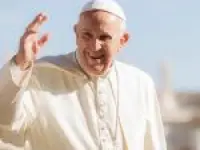
What Happens When The Pope Dies? Know the Papal Transition (image-pixabay)
With the passing of Pope Francis, the Catholic Church has entered a period known as ‘sede vacante’, which means “the seat being vacant”, triggering centuries-old protocols that guide the transition of papal authority. These canonical procedures, which are established by Church law, are primarily found in the Code of Canon Law (1983) and the Apostolic Constitution Universi Dominici Gregis, issued by Pope John Paul II in 1996.
And this is how the procedure is stated: upon the passing of the pope, the papal physician will have to confirm the death. This confirmation is required for the formal acknowledgment of the event. The medical professionals who serve the pope of the Catholic Church are known as the papal physician.
Read also: Blog | Pope Francis: A Friend, Voice Of All
Soon after the confirmation, the death is then immediately notified to the cardinal chamberlain (the highest-ranking official in the Vatican during the interregnum), followed by the College of Cardinals and then later to the public.
The Vatican’s press office releases the official announcement. And then begins the Sede Vacante period, till the next pope is appointed. Until the next pope is appointed, the governance of the Church is assumed by the College of Cardinals. The administration of the Vatican and managing the affairs of the Church will be looked after by them.
The College of Cardinals then prepares the conclave, where a new pope will be elected. This includes determining the number of cardinals eligible to vote and setting the date for the conclave as well. Only the cardinals under the age of 80 at the time of the pope’s death will be able to participate in the conclave, which has a limit of 120 voting members.
The conclave consists of a series of secret ballots during which the cardinals vote to elect a new pope.
As for the funeral, it will be organised during the mourning period. It usually occurs within a week after the pope’s death and includes a Requiem Mass. The body of the late pope is usually displayed in St. Peter’s Basilica for public viewing for a period of time, allowing the faithful to pay respect.
Following the funeral, the pope’s remains are interred in a designated place, often in a crypt beneath St. Peter’s Basilica or another significant location.
Read also: Pope Francis Dies At The Age Of 88
Here’s how the voting process is done: the cardinals will gather in the Sistine Chapel and will begin with a Mass. They then enter a series of voting rounds. After each round is concluded, the ballots are burned. However, if no candidate receives a two-thirds majority, additional rounds of voting will be held until a new pope is elected.
Soon after the pope is elected, white smoke will be emitted from the chimney of the Sistine Chapel as a sign that a new pope has been elected. The cardinal protodeacon then announces to the world, “Habemus Papam.”
Shortly after the conclave, the inauguration of the new pope takes place. The Inauguration Mass is a solemn ceremony marking the beginning of the new papacy. During the Mass, the new pope takes the oath, pledging to fulfil the responsibilities.
Following the inauguration, the newly elected pope will traditionally deliver his first blessing, which is known as “Urbi et Orbi” (to the city and the world).













